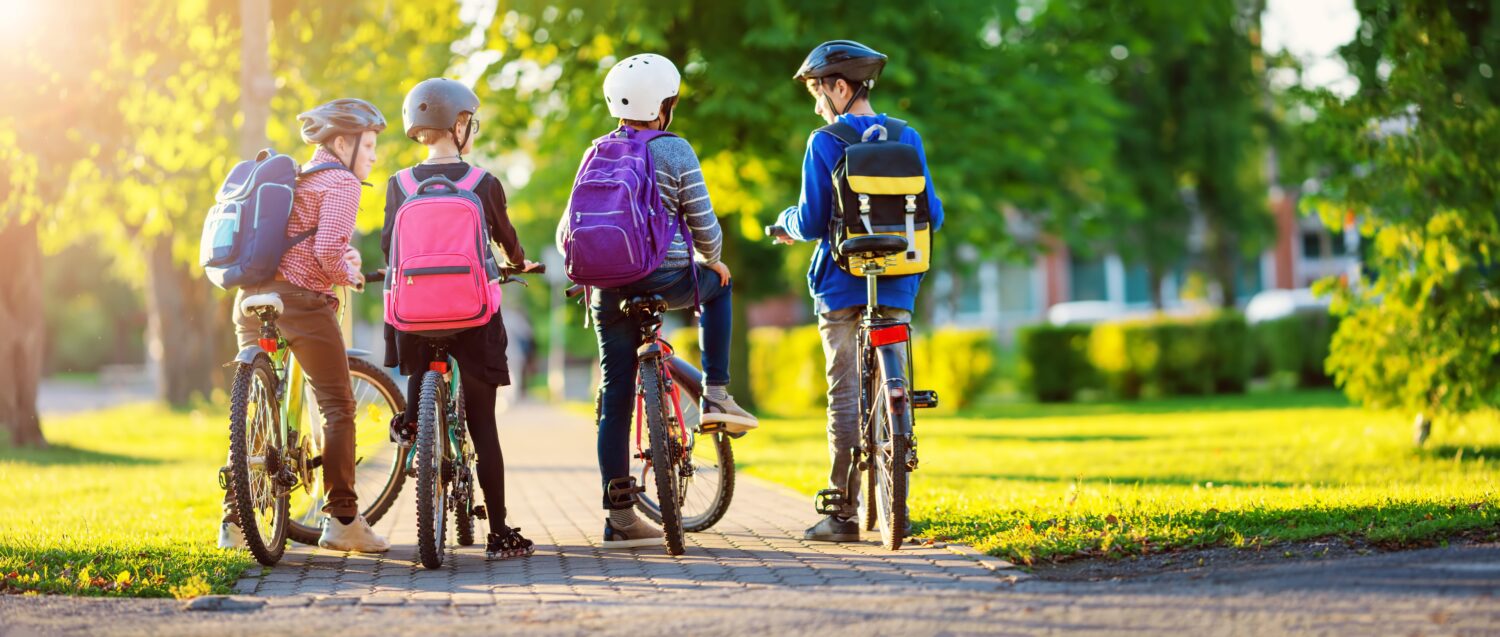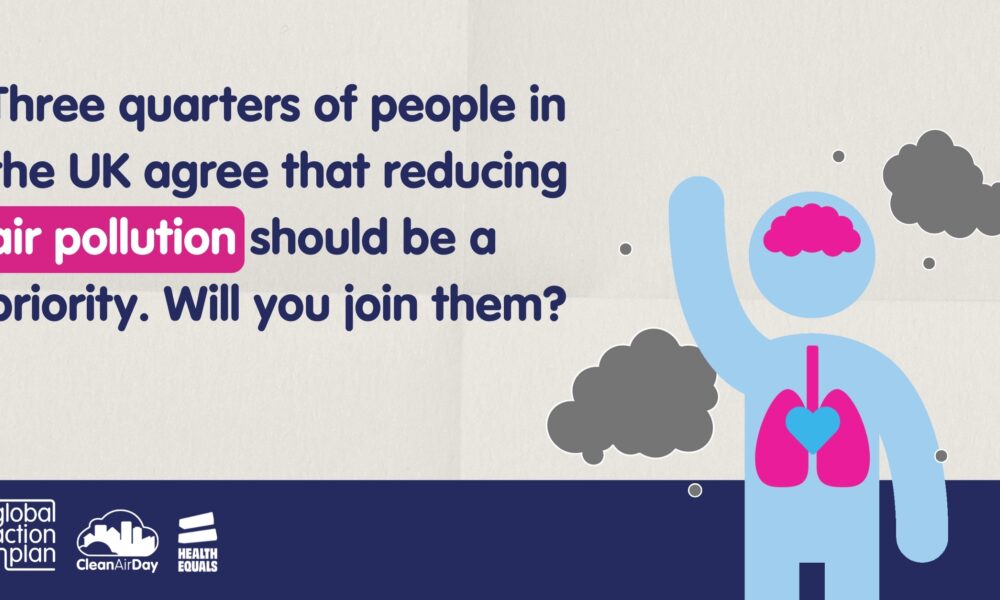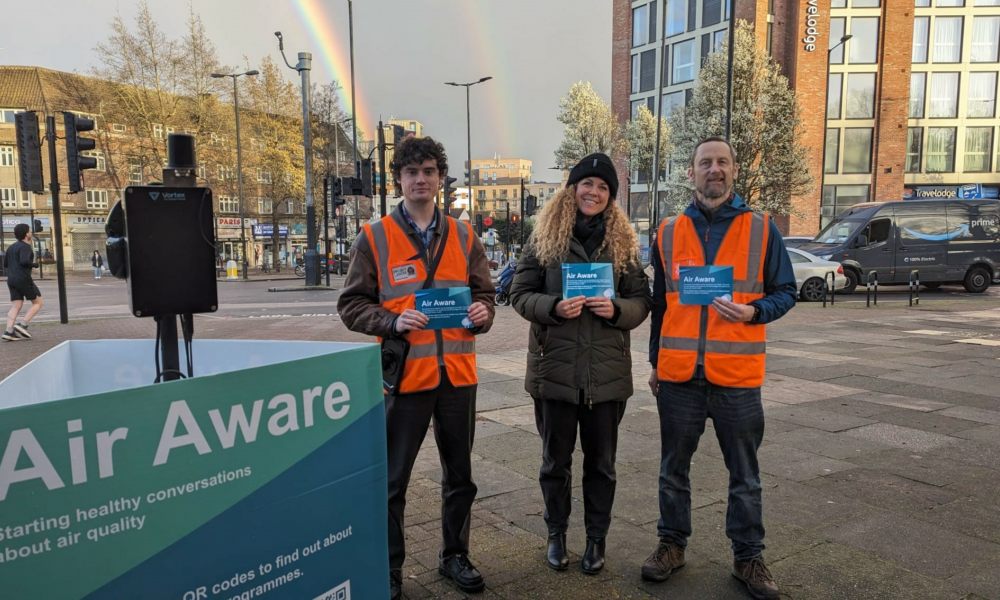Four reasons why school streets are important
School streets are becoming increasingly popular in the UK, with more than 500 across London. This blog looks into how they are used and their desired outcomes.
Scott Sutton - 17 February 2023

Overview
It is clear that road traffic policies are getting stricter, technology is getting more intelligent, and we as humans are always looking at ways we can improve our environment, infrastructure and daily lives.
This has been the case with school streets, where we have witnessed an evolution in how they operate around the country. In a nutshell, school streets are a temporary road closure for certain motor vehicles outside the school gates during pick-up and drop-off periods. This is to help children access the school safely, promote active travel and reduce air pollution.
As you can imagine, congestion outside school gates reaches peak volumes in the morning and afternoon. Therefore, parents are concerned for the safety of their children if they decide to walk, cycle, scoot or wheel to school. In some parts of London, 43% of car journeys are linked to school trips. This makes you think of the CO2 emissions around London’s surroundings, where children constantly breathe toxic air and consequently harm their young respiratory systems.
What are the differant types of school streets?
School streets have traditionally been implemented using street signs and physical barriers to prevent motor vehicles from entering the car-free zone. The problem with doing so is that it is resource-intensive, unsightly and adds no value to determine the effectiveness of this strategy and the positive impact it can have on our infrastructure and traffic congestion.
On the flip side, we have been fortunate with technological advancements and can now control school streets using unattended CCTV technology. This eliminates the requirement for physical barriers to be installed in the middle of the road and may instead be substituted with an autonomous camera that can monitor any cars entering the zone and traffic contraventions.
Unattended CCTV technology provides actionable data regarding the number of cars removed from the zone, vehicle type, co2 emission vehicle band, and much more. This can be coupled with a hyperlocal air quality monitoring solution to collect real-time localised air quality readings to support data-driven decisions. This allows the school to validate the environmental impact of any school street initiative by conducting a pre and post-implementation analysis.
Air pollution varies from street to street, and until local authorities better understand the air quality in vulnerable areas like schools, we will not be able to tackle the problem.
Here are four reasons why school streets should become mandatory around the UK:
Improved Road Safety
The safety of children is essential around school roads, and we have seen significant progress in the last decade in ensuring we limit traffic-related accidents. However, with sadness, road collisions remain one of the leading causes of premature death among children and young people aged 0-15, with 35% of child pedestrians killed or seriously injured during what is typically classified as the ‘school run’.
Since this data came to light, 20mph speed limits have been advised at every school in the United Kingdom. Science has demonstrated that the impact of force between 20 and 30 miles per hour is severe and can be the difference between a child's life and death. However, we have moved beyond reducing speed limits by restricting vehicle access to the area surrounding a school street. Thereby, parents may rest assured that their children can actively transport themselves to school without fear of an accident, for example, crossing a street on a bicycle.
Think about the reduction in traffic volume; it's extraordinary. Our sister company Videalert provided Lewisham Council with intelligent CCTV technology to control vehicles entering the zone. Any offences committed were conducted in a post-implementation analysis.
After analysing data on traffic patterns outside individual schools, they found that 96,000 fewer car trips were taken outside of just one school in a year and reduced 862,500 vehicle movements. Considering the number of journeys reduced, this significantly impacted air quality, removing an expected 6.8 tonnes of nitrous oxide and 0.5 tonnes of PM2.5. Further to the analysis, the project anticipated a 3,552-tonne reduction in carbon dioxide emissions respectively.

Improved Air Quality
This is a big one and in parallel with the safety importance to again, keep children safe and protect their health. Approximately 50% of London's emissions come from road vehicles. London's toxic air already causes thousands of early deaths in the capital each year, slowing the growth of young lungs and increasing instances of respiratory illness. Additionally, air pollution has been associated with an increased likelihood of getting Covid-19 and having the most severe symptoms.
Walking along the road to school appears to be a healthy and enjoyable activity for school-aged children. Still, considering the number of cars, lorries, vans and trucks that frequent our roads, the air can be harmful and unpleasant due to the tonnes of CO2 emitted. In addition, your height can affect the levels of toxins entering your body. Children walk closer to the exhausts of idle vehicles on their way to school, particularly in densely populated places. By removing these vehicles from our school gates, children will benefit from cleaner air, making your day significantly more pleasant and safer.
We must track the peaks and troughs in air pollutants to prevent youngsters from breathing harmful air. This can be achieved by using small sensors to monitor the air locally. Using real-time data from our VTX Air sensors, clients can identify changes in air quality outside schools as little as every minute, which can help support interventions to improve the air.
Additionally, the data collected from the sensors can inform the environmental success of the scheme to determine whether we have seen an improvement in air quality.
Encourage Active Travel
Since school streets have been rolled out, we have seen a significant behaviour change in how people travel to school. Every person should have the right to clean air and be able to walk, cycle, scoot or wheel to school with the enjoyment of fresh air and the company of their friends.
A generation ago, 70% of children walked to school. In Wales, however, only 44% of children walk, cycle, or use a scooter. Has the younger generation become reliant on quick, easy transport and neglected active travel modes? These are the questions that have been asked, but it is crucial to note that they have become dangerous due to the large volume of traffic around schools. Considering the possibility of a severe accident, parents/guardians are less likely to walk their children to school.
On the other hand, the rise of school streets is reversing the drop. With new bike sheds and safer streets, schools have begun to roll out programmes to promote active transport, rewarding students while raising awareness of the physical and mental health benefits.

Mental and Physical Health
As previously stated, the school streets programme intends to enhance road safety for those who travel sustainably, improve air quality, and encourage others who do not actively commute to get out there and potentially walk, cycle, scoot or wheel.
Unfortunately, not everyone can travel sustainably due to where they live or other factors. Nonetheless, active exercise is critical. It benefits your physical and mental health, and you could do it on your way to school.
Children who exercise at a young age are less likely to develop respiratory illnesses later in life. Although obesity among youngsters has become an issue in the UK in recent years, a lack of exercise is a contributing factor.
School streets boost children's well-being, increasing concentration and hopefully making them happy when they arrive at the classroom. Cycling to school also increases self-confidence as children can practice a skill they have learnt and exercise self-control.
If you want to know more about school streets, please get in touch with us here, and a member of our team will be in touch immediately. https://vortexiot.com/contact
More blogs

Should clean air be a national priority?
Millions across the UK are still exposed to harmful levels of air pollution every day. As we mark Clean Air Day, it’s time to ask: if clean air impacts our health, our…

Engaging communities for cleaner air
As we mark Clean Air Day, we proudly highlight the significance of engagement and behaviour change to make a tangible difference in the fight against air pollution.